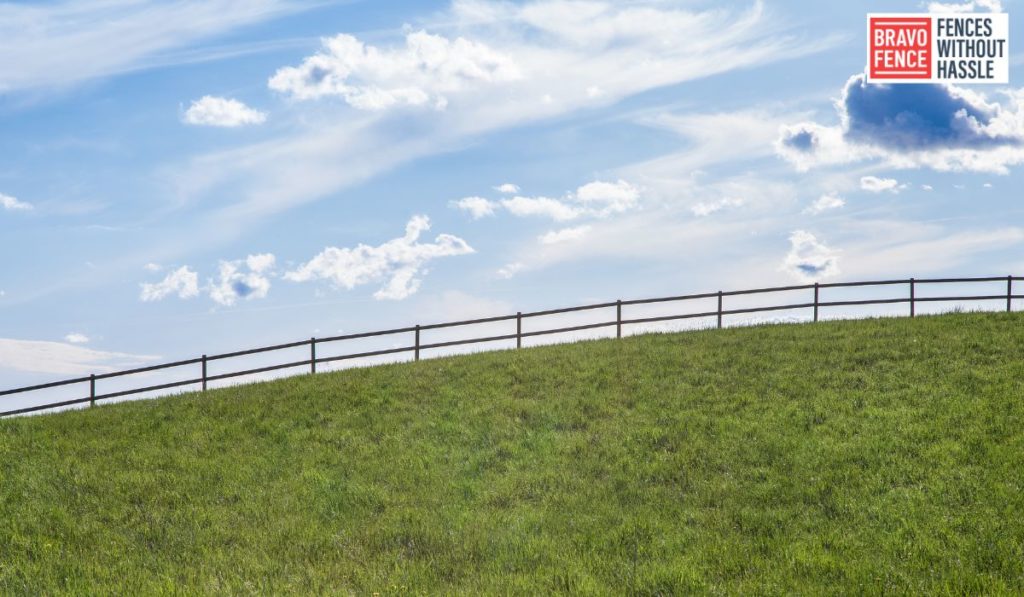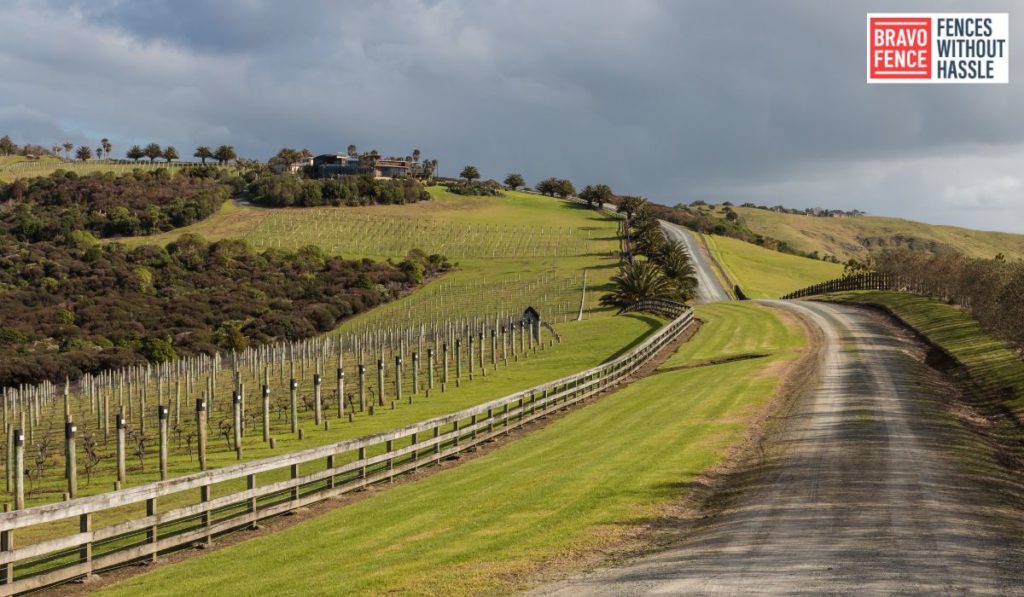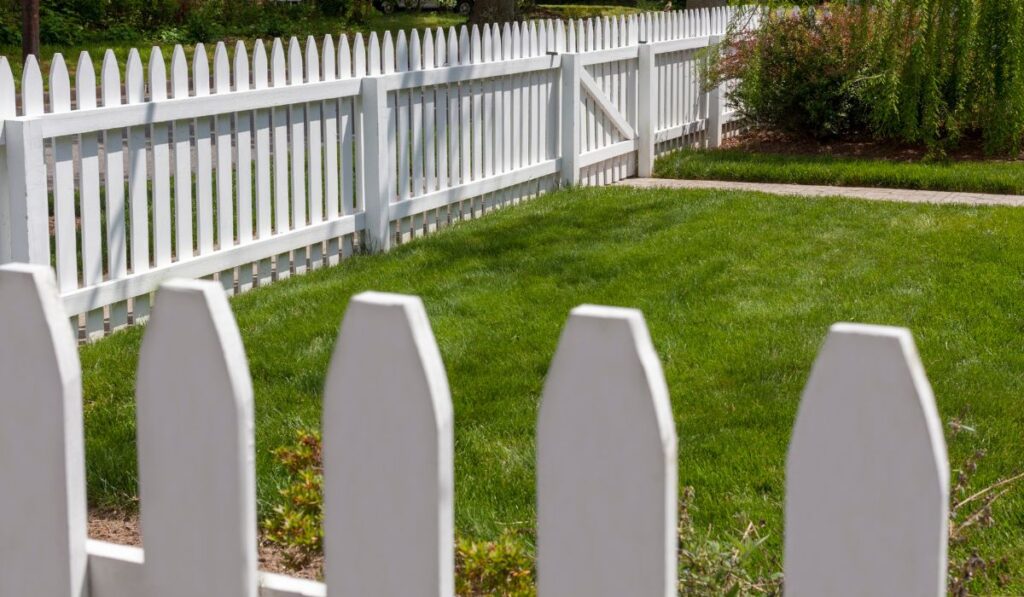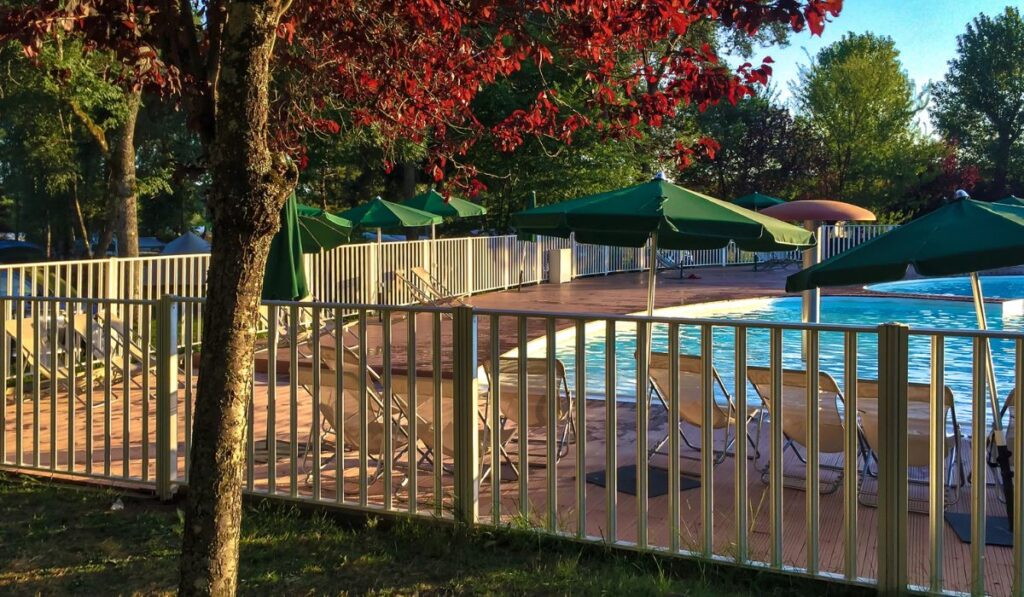If you’re considering adding a vinyl fence to your property, especially on a slope, you’re making a smart choice in terms of durability and aesthetics.
Vinyl fences are known for their low maintenance requirements and longevity.
However, installing a vinyl fence on a slope comes with its own set of challenges and considerations.
In this article, we’ll delve into the intricacies of installing a vinyl fence on a slope, step-by-step installation processes, the pros and cons of professional installation versus DIY, maintenance tips, and more.
Assessing the Challenges of Installing Vinyl Fences on Slopes
When dealing with uneven terrain, installing a fence requires careful planning and execution.
Here are some key challenges to consider when installing a vinyl fence on a slope:
Ensuring Proper Alignment and Stability
One of the primary challenges of installing a vinyl fence on a slope is ensuring proper alignment and stability.
The fence panels need to be correctly positioned to maintain a uniform appearance while ensuring stability and support.
Dealing with Height Discrepancies
Sloping terrain often results in height discrepancies along the fence line.
This can affect the aesthetic appeal and privacy provided by the fence.
Addressing these discrepancies requires precise measurements and adjustments.
Managing the Gap Beneath the Fence
A sloped landscape might leave a gap beneath the fence panels.
This gap not only affects the fence’s appearance but can also allow small animals to enter.

Properly addressing this gap is crucial for both aesthetics and functionality.
Step-By-Step Installation Process For Vinyl Fence On A Slope
Installing a vinyl fence on a slope requires meticulous attention to detail.
Here’s a step-by-step guide to help you through the process:
Gather Your Tools and Materials
Before you begin, make sure you have all the necessary tools and materials.
This includes fence panels, posts, brackets, screws, a level, a post hole digger, and concrete.
Mark the Fence Line
Mark the desired fence line using stakes and string.
This will give you a clear outline of where the fence will be installed.
Dig the Post Holes
Using a post hole digger, dig the necessary post holes along the fence line.
The depth of the holes should be determined by the height of the fence.
Install the Corner and End Posts
Start by installing the corner and end posts.
These posts are crucial for the stability of the entire fence.
Make sure they are plumb and secure.
Set Up the Fence Panels
Attach the fence panels to the posts using brackets and screws.
Ensure that the panels are level and follow the slope of the terrain.
Trim to Fit
Depending on the slope, some panels might need to be trimmed to fit properly.
Measure and cut them as needed for a seamless appearance.
Secure and Stabilize
Double-check the stability of the entire fence.
Make sure all panels are securely attached and that the fence is level and aligned.
Backfill and Concrete
Backfill the post holes with soil and pour concrete to secure the posts in place.
Allow the concrete to set before applying any pressure to the fence.
Professional Fence Installation Vs. DIY
Deciding between hiring a professional to install your vinyl fence or tackling it as a DIY project requires careful consideration.
Here’s a comparison of the two options:
Professional Installation
Hiring professionals can save you time and ensure a precise and flawless installation.
They have the experience and tools to handle various terrains and challenges.
DIY Installation
Installing a vinyl fence on your own can be cost-effective, but it requires a significant amount of time, effort, and attention to detail.
DIY installation is more feasible for individuals with some level of construction experience.
Maintenance Tips For Sloped Fences
Maintaining a vinyl fence on a slope is relatively simple, but there are a few key tips to keep in mind:
- Regularly inspect the fence for any signs of damage or shifting, especially after heavy weather conditions.
- Clean the fence panels periodically using mild soap and water to remove dirt and grime.
- Check for any gaps beneath the fence and fill them to prevent small animals from entering.
- Trim any overgrown vegetation around the fence line to maintain its appearance and prevent potential damage.
Learn More About Stepped Fencing Options With Bravo Fence Company
If you’re looking for creative solutions for fencing on slopes, consider exploring stepped fencing options with Bravo Fence Company.
Stepped fencing involves installing fence panels at different heights, following the natural slope of the land.
This approach can create a visually appealing and functional fencing solution.
Conclusion
Installing a vinyl fence on a slope requires careful planning, precise execution, and a good understanding of the challenges involved.
By following the right steps and considering professional assistance when needed, you can achieve a durable and aesthetically pleasing vinyl fence that enhances the beauty and security of your property.
FAQs
Can you install a vinyl fence on a slope?

Yes, you can install a vinyl fence on a slope. However, it requires careful planning and adjustments to ensure proper alignment and stability.
How do you install a vinyl fence on sloped land?
To install a vinyl fence on sloped land, you’ll need to adjust the positioning of the fence panels to match the slope, trim panels as necessary, and ensure proper post hole placement.
What is the easiest fence to install on a slope?
Vinyl fences are relatively easy to install on a slope due to their flexibility and lightweight nature.
What is the disadvantage of vinyl fence?
One disadvantage of vinyl fences is that they can be more expensive upfront compared to other fencing materials.
Should the bottom of a vinyl fence touch the ground?
It’s generally recommended to leave a small gap at the bottom of a vinyl fence to prevent water from being trapped, which can lead to deterioration.
Can you install a vinyl fence without digging?
Some vinyl fences can be installed without digging, using methods like driving posts into the ground. However, this might not be suitable for sloped terrain.
What do you put under vinyl fence?
You can use gravel or concrete to secure the bottom of the fence posts and provide stability.
What is the best fencing for uneven terrain?
Stepped fencing or adjustable panel fences are often the best options for uneven terrain.
How deep to bury vinyl fence post?
Vinyl fence posts are typically buried about one-third of their length into the ground for stability.
What is the life expectancy of a vinyl fence?
With proper maintenance, a vinyl fence can last for decades, often exceeding 20 years.
How long will a vinyl fence last?
A well-maintained vinyl fence can last for 20 years or more.
Which is better, vinyl, or PVC fence?
Vinyl and PVC are essentially the same material when it comes to fencing. Both offer durability and low maintenance.
What is the least expensive fence you can build?
Chain-link fences are often considered one of the least expensive fencing options.
Should a fence follow the slope?
Yes, a fence on a slope should ideally follow the natural contour of the land for a visually pleasing appearance.
Can you install a fence on uneven ground?
Yes, fences can be installed on uneven ground by using methods like stepped fencing or adjustable panels.
Do vinyl fences need maintenance?
Vinyl fences require minimal maintenance, usually limited to occasional cleaning and inspections for damage.
Is a vinyl fence cheaper than wood?
Vinyl fences can be initially more expensive than wood fences, but their long-term durability and low maintenance can offset the cost difference.
Does a vinyl fence break easily?
Vinyl fences are durable and resistant to cracking or breaking under normal conditions.
Should you fill vinyl fence posts with concrete?
Filling vinyl fence posts with concrete can provide additional stability, especially in areas with strong winds or heavy soil.
How many bags of concrete do I need for a vinyl fence post?
The number of concrete bags needed depends on the size of the post hole. Typically, one 50-pound bag is sufficient for a small to medium-sized post hole.
How do you brace a vinyl fence against wind?
Bracing a vinyl fence against wind can be achieved by using diagonal braces or installing the fence in a stepped configuration.
Remember, installing a vinyl fence on a slope requires careful planning and attention to detail. When in doubt, consider consulting a professional for guidance and assistance.






